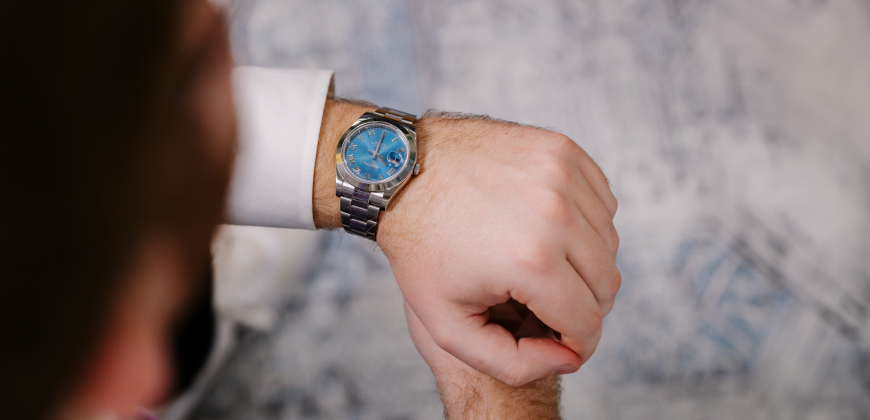
If you were taking a quiz on this, you’d have a 50/50 chance of answering correctly as you’d either have to answer the left hand or the right hand. Seems pretty straightforward, right? But the answer isn’t as black and white, or left and right, as it seems. Preference plays a big role in which wrist, but so does practicality. Let’s look at some things to consider in answering the question.
Is the Right Hand the Right Choice?
The answer to the question actually doesn’t demand an answer like the “right” hand or the “left” hand, but rather needs to take into perspective which hand is your dominant hand and non-dominant hand. Your dominant hand is the one you write with, eat with, open things with, and pick things up with (generally speaking). If you’re athletic, it’s also the hand that swings a tennis racket, serves a volleyball or throws a baseball. For 75-90% of people in the world , the dominant hand is the right hand, and a watch is worn on the non-dominant left hand. For left-handed individuals, the watch is primarily worn on the non-dominant right hand. But why is that? Why did this “rule” ever come to be? There are several good reasons why the non-dominant hand is the appropriate hand you should wear a watch on, including:
- It’s easier to see the time. Imagine you’re writing or taking notes and you need to check what time it is. It’s easiest to pick up the hand that’s NOT writing to see exactly what time it is. With your dominant hand busy much of the day, it’s easy to see why this recommendation came about to wear the watch on the non-dominant hand for ease of access to seeing the time.
- You can protect it from potential damage. Back to point #1, your dominant hand does a lot of work on any given day. It’s moving things, picking up things and opening things all day long. Your non-dominant hand, however, gets used for a fraction of the work of your dominant hand. Therefore, wearing a watch on your non-dominant hand can help protect it from getting banged up, scratched, dirty and even broken.
- It’s easier to set the time and settings. Here’s one you probably never thought about. Look at your watch and notice that, for most people, the crown is on the right side. This is purposeful as watchmakers know that most of their watch-buying audience is right-handed and will need to use that dominant hand to pull out and twist that tiny spinning piece to set the time. If you wear the watch on your dominant hand, it will be virtually impossible to change the time or adjust the settings while the watch is still on your wrist because first you’ll be using your weaker hand, and second, that crown is generally found on the right side of the watch, making it tricky to twirl with your left hand.
So, the answer to the question is, practically speaking, you should wear a watch on your non-dominant hand. But what if you’re left-handed? Well, the same practical advice is true for all the same reasons. But can you just flip a watch made for the left wrist for a right-hander onto the right wrist for a left-hander? The answer is, generally not. First, as noted, it would be hard to change the time even for a left-handed person because the crown is typically placed on the right side of the watch where it wouldn’t be accessible even to a left-handed person. But additionally, simply wearing a watch on your right hand can also be uncomfortable because the crown can dig into your wrist skin as you bend and move your arm all day. The best option for a left-handed person is to buy a “Destro” watch (which means “right” in Italian). On Destro watches, the crown is purposefully placed on the left side of a watch worn on your right wrist so it’s easily accessible for a lefty to access.
At the end of the day, you can wear a watch on either wrist, but typically it will be most comfortable and accessible if you wear it on your non-dominant hand. And now that you’ve got that figured out, it’s time to get that watch insured before you nick it, scratch it or worse, lose it. Homeowner’s policies are not the only way to insure jewelry, and sometimes not the best way, either. Personal jewelry insurance policies like those offered by Jewelers Mutual can protect against loss, theft, disappearances, and have zero deductible options. View all the benefits of a personal jewelry insurance policy here and check your rate using the button below.
